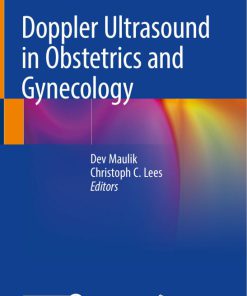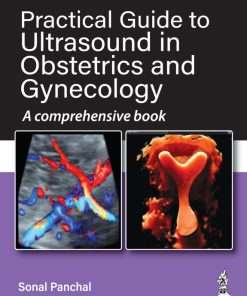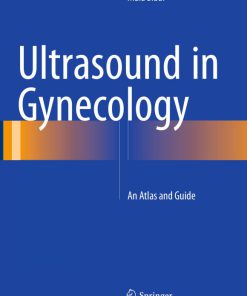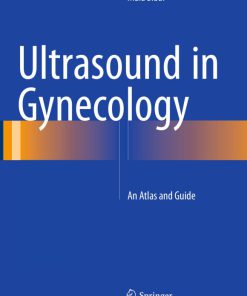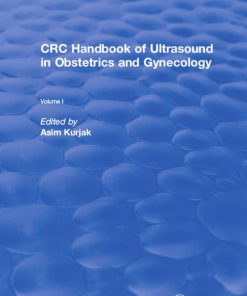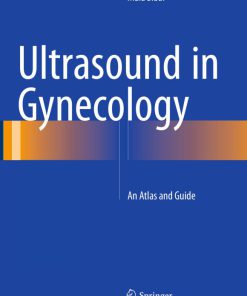(Ebook PDF) Ultrasound in Gynecology An Atlas and guide 1st edition by Mala Sibal 9811027145 9789811027147 full chapters
$50.00 Original price was: $50.00.$25.00Current price is: $25.00.
Authors:Mala Sibal , Series:Gynecology & Obstetrics [89] , Author sort:Sibal, Mala , Languages:Languages:eng , Published:Published:Jan 2017 , Publisher:Springer
Ultrasound in Gynecology An Atlas & guide 1st edition by Mala Sibal – Ebook PDF Instant Download/DeliveryISBN: 9811027145, 9789811027147
Full download Ultrasound in Gynecology An Atlas & guide 1st edition after payment.
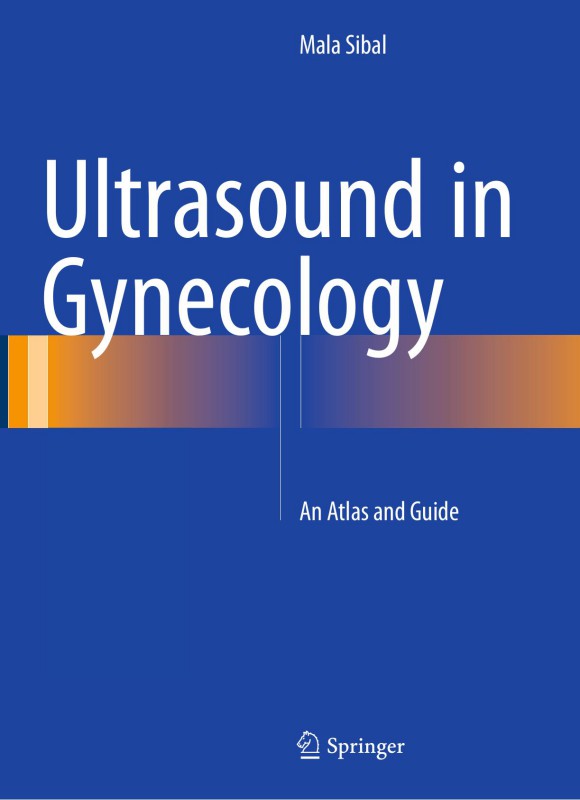
Product details:
ISBN-10 : 9811027145
ISBN-13 : 9789811027147
Author : Mala Sibal
This atlas and guide book is focused on gynecological ultrasound, an area that has remained in the shadow of obstetric ultrasound & fetal medicine. Gynecological ultrasound has seen rapid advances owing to expanding research and improved ultrasound equipment. This book leverages these advances and provides abundant illustrations and practice points of classical and new ultrasound features. It serves as a guide for radiologists, gynecologists and sonologists for the accurate diagnosis of gynecological pathologies. The chapters of this book also serve as a comprehensive resource for various topics with hundreds of images and figures, including basic gray scale images, Doppler studies and three dimensional ultrasound illustrations. In addition, standard terms for the evaluation and reporting of gynecological pathologies are discussed. Emergencies like ovarian torsion, complex adnexal cyst are also covered.
Ultrasound in Gynecology An Atlas & guide 1st Table of contents:
1: Introduction
2: General Techniques in Gynecological Ultrasound
2.1 Transabdominal Scan
2.2 Transvaginal Scan
2.3 Three-Dimensional Ultrasound (Figs. 2.10, 2.11, 2.12, 2.13, 2.14, 2.15, 2.16, 2.17, 2.18, 2.19
2.4 Doppler (Figs. 2.25, 2.26, 2.27, 2.28, 2.29, 2.30, 2.31 and 2.32)
2.5 Tips and Tricks of Pelvic Ultrasound
2.6 Sonohysterography (SHG)
2.7 Gel Sonovaginography (GSV)
Suggested Reading
3: Ultrasound Evaluation of Myometrium
3.1 Evaluation of Myometrium
3.2 Normal Myometrium (Figs. 3.8, 3.9 and 3.10)
3.3 Fibroids (Leiomyoma or Myoma)
3.3.1 Fibroid Mapping
3.3.1.1 Basics of Fibroid Mapping (Figs. 3.18, 3.19 and 3.20)
3.3.1.2 Site of Origin of a Fibroid (Figs. 3.21, 3.22 and 3.23)
3.3.1.3 Role of 3D in Fibroid Mapping (Figs. 3.24, 3.25 and 3.26)
3.3.1.4 Reporting of Fibroids/Fibroid Mapping (Figs. 3.27 and 3.28)
3.3.2 Red Degeneration (Fig. 3.29)
3.3.3 Fibroid Embolization (Figs. 3.30 and 3.31)
3.3.4 Diffuse Uterine Leiomyomatosis (Figs. 3.32 and 3.33)
3.3.5 Disseminated Peritoneal Leiomyomatosis (DPL) (Fig. 3.34)
3.4 Adenomyosis and Adenomyomas
3.4.1 Adenomyoma (Figs. 3.47 and 3.48)
3.5 Sarcoma
Suggested Reading
4: Ultrasound Evaluation of Endometrium
4.1 Evaluation of Endometrium
4.2 Normal Endometrium
4.2.1 Endometrium in Paediatric Age Group (Fig. 4.10)
4.2.2 Endometrium in Reproductive Age Group (Figs. 4.11 and 4.12)
4.2.3 Endometrium in Postmenopausal Women (Fig. 4.13)
4.3 Endometrial Polyps
4.4 Endometrial Hyperplasia
4.4.1 Tamoxifen-Associated Endometrial Changes (Fig. 4.44)
4.5 Endometrial Malignancy
4.6 Differential Diagnosis of Thickened Endometrium (Fig. 4.56)
4.7 Asherman’s Syndrome or Intrauterine Adhesions
4.8 Subendometrial Fibrosis (Figs. 4.62 and 4.63)
4.9 Endometritis
4.10 Intracavitary Fluid in the Uterus (Figs. 4.69, 4.70, 4.71, 4.72, 4.73 and 4.74)
Suggested Reading
5: Ultrasound Evaluation of the Cervix
5.1 Evaluation of the Cervix and Its Normal Appearance
5.2 Nabothian Cysts
5.3 Cervical Polyps
5.4 Cervical Fibroids (Figs. 5.15, 5.16 and 5.17)
5.5 Cervical Carcinoma
Suggested Reading
6: Ultrasound Evaluation of the Vagina
6.1 Normal Vagina (Fig. 6.1)
6.2 Congenital Vaginal Anomalies
6.3 Vaginal Cysts (Figs. 6.2, 6.3, 6.4, 6.5, 6.6, 6.7)
6.3.1 Gartner Duct Cysts and Mullerian Cysts
6.3.2 Bartholin Gland Cysts
6.3.3 Skene Gland Cysts
6.4 Vaginal Masses and Vaginal Cancer
6.5 Other Vaginal Pathologies
6.5.1 Vaginal DIE
6.5.2 Foreign Body in the Vagina (Fig. 6.13)
6.6 Vulval Carcinoma (Fig. 6.14)
Suggested Reading
7: Ultrasound Evaluation of Ovaries
7.1 Evaluation of Ovaries and Persistent Adnexal Masses
7.1.1 Morphology, Measurement and Doppler Evaluation of the Ovary and Ovarian Masses (Including
7.1.2 Morphological Classification of Ovarian/Adnexal Masses (Fig. 7.14)
7.2 Normal Ovaries
7.3 Polycystic Ovaries (PCO)
7.3.1 PCO in the Absence of PCOS
7.4 Ovarian Masses
7.4.1 Functional or Physiological Cysts (Figs. 7.21, 7.22 and 7.23)
7.4.2 Endometriotic Cysts (Endometriomas)
7.4.2.1 Decidualised Endometriotic Cysts (Figs. 7.32 and 7.33)
7.4.3 Ovarian Neoplasms
7.4.3.1 Epithelial Tumours
Serous Epithelial Tumours
Serous Cystadenoma
Borderline Serous Tumours
Serous Cystadenocarcinoma
Serous Cystadenofibroma (Figs. 7.41 and 7.42)
Mucinous Cysts
Mucinous Cystadenoma
Borderline Mucinous Cysts
Mucinous Cystadenocarcinoma
7.4.3.2 Germ Cell Tumours
Dermoids (Mature Cystic Teratoma)
Malignant Germ Cell Tumour
Sex Cord–Stromal Tumours
Granulosa Cell Tumour
Sertoli and Sertoli–Leydig Cell Tumours
Leydig Cell Tumours
Fibromas and Fibrothecoma
7.4.3.3 Metastatic Ovarian Masses
Suggested Reading
8: Endometriosis
8.1 Deep Infiltrating Endometriosis (DIE)
Significance of DIE
8.1.1 DIE of Large Bowel (Rectosigmoid)
8.1.2 DIE of the Vaginal Wall
8.1.3 Cervical DIE
8.1.4 Uterosacral DIE (Figs. 8.10 and 8.11)
8.1.5 Bladder DIE
8.1.6 DIE Involving the Ureters (Figs. 8.13 and 8.14)
8.1.7 Uterus in Cases with DIE (Figs. 8.15 and 8.16)
8.2 Extra-Pelvic Endometriosis
8.2.1 Abdominal Wall Endometriosis
8.2.2 Abdominal and Thoracic Endometriosis (Fig. 8.20)
Suggested Reading
9: Ultrasound Evaluation of Adnexal Pathology
9.1 Fallopian Tube
9.2 Pelvic Inflammatory Disease (PID)
9.3 Chronic PID
9.4 Hydrosalpinx
9.5 Tubal Malignancy
9.6 Paraovarian and Paratubal Cysts
9.7 Peritoneal Inclusion Cysts
Suggested Reading
10: Ultrasound Evaluation of Pregnancy-Related Conditions
10.1 Ectopic Pregnancy
10.1.1 Tubal Ectopic Pregnancy
10.1.2 Interstitial Ectopic Pregnancy
10.1.3 Cornual Ectopic Pregnancy
10.1.4 Ovarian Ectopic Pregnancy
10.1.5 Cervical Ectopic Pregnancy
10.1.6 Scar Ectopic Pregnancy
10.1.7 Intra-abdominal Pregnancy (Fig. 10.24)
10.1.8 Heterotopic Pregnancy (Figs. 10.25 and 10.26)
10.1.9 Intra-myometrial Ectopic Pregnancy (Fig. 10.27)
10.2 Retained Products of Conception (RPOC)
10.3 Gestational Trophoblastic Disease (GTD)
10.3.1 Molar Pregnancy
10.3.1.1 Molar Pregnancy: Complete Mole
10.3.1.2 Molar Pregnancy: Partial Mole
10.3.2 Gestational Trophoblastic Neoplasia (GTN)
10.3.2.1 Invasive Mole
10.3.2.2 Choriocarcinoma
10.3.2.3 Placental Site Trophoblastic Tumour (PSTT) and Epithelioid Trophoblastic Tumour (ETT)
Suggested Reading
11: Torsion
11.1 Ovarian Torsion
11.2 Non-ovarian Torsion
Suggested Reading
12: Ultrasound Evaluation of Congenital Uterine Anomalies
12.1 Embryopathogenesis (Figs. 12.1, 12.2)
12.2 AFS Classification of Uterine Anomalies (Figs. 12.2 and 12.3)
12.3 Approach to Diagnosing a Uterine Anomaly
12.4 Types of Uterine Anomalies
12.4.1 Arcuate Uterus (Fig. 12.10)
12.4.2 Subseptate Uterus (Fig. 12.13)
12.4.3 Septate Uterus (Fig. 12.14)
12.4.4 Bicornuate Uterus (Fig. 12.15)
12.4.5 Uterus Didelphys (Fig. 12.16)
12.4.6 Unicornuate Uterus (Fig. 12.17)
12.4.7 Absent/Hypoplastic Uterus (Figs. 12.18 and 12.19)
12.4.8 ‘T-Shaped’ Uterus (Fig. 12.20)
12.5 Cervical and Vaginal Anomalies (Figs. 12.16e, 12.21, 12.22, 12.23, 12.24, 12.25, 12.26, 12.2
12.6 ESHRE/ESGE Classification of Congenital Uterine Anomalies
12.7 Reporting Uterine Anomalies (Fig. 12.31)
Suggested Reading
13: Ultrasound in Other Miscellaneous Conditions
13.1 Uterine Vascular Abnormalities (Arteriovenous Malformations)
13.2 Perforation of the Uterus
13.3 Vesicouterine Fistula
13.4 Retroflexed Uterus
13.5 Caesarean Scar Defect (LSCS Scar Defect)
13.6 Intrauterine Contraceptive Device (IUCD)
13.7 Follicular Monitoring and Ultrasonography in Patients with Infertility (Figs. 13.26 and 1
13.7.1 Cyclical Changes During Menstrual Cycle (Both Natural and Induced) (Figs. 13.26 and 13.2
13.7.2 Types of Scans Done in Patients Presenting or on Treatment for Infertility
13.7.3 Luteinised Unruptured Follicle (Fig. 13.28)
13.8 Ovarian Hyperstimulation Syndrome (OHSS)
Suggested Reading
14: Exploring Pathologies Based on Clinical Presentation
14.1 Abnormal Uterine Bleeding
14.1.1 Common Forms of Abnormal Uterine Bleeding
14.1.2 Abnormal Uterine Bleeding in the Reproductive Age Group
14.2 Pelvic and Adnexal Masses
14.2.1 Ovarian Masses
14.2.2 Uterine Masses
14.2.3 Tubal Masses
14.2.4 Tubo-ovarian Masses
14.2.5 Paraovarian Masses
14.2.6 Pseudoperitoneal or Peritoneal Inclusion Cysts
14.2.7 Pelvic Hematomas and Pelvic Abscess
14.2.8 Non-gynecological Masses (Fig. 14.5)
14.2.9 IOTA Recommendation for Evaluation of Persistent Adnexal Masses
14.2.9.1 Simple Rules (Figs. 14.6 and 14.7)
14.2.9.2 Simple Descriptors (Figs. 14.8 and 14.9)
14.2.9.3 Three-Step Strategy for Evaluating the Nature of Persistent Adnexal Masses (Ameye et al.
14.3 Acute Pelvic Pain
14.4 Locating the Pregnancy and Pregnancy of Unknown Location (PUL)
People also search for Ultrasound in Gynecology An Atlas & guide 1st:
ultrasound in gynecology an atlas and guide pdf
ultrasound in gynecology an atlas and guide
ultrasound in gynecology an atlas and guide mala sibal
uses of ultrasound in obstetrics and gynecology
ultrasound in obstetrics and gynecology author guidelines
You may also like…
eBook PDF
Ultrasound in Gynecology An Atlas and Guide 1st edition by Mala Sibal ISBN 9811027137 978-9811027130
eBook PDF
Ultrasound in Gynecology An Atlas and Guide 1st edition by Mala Sibal ISBN 9811027137 9789811027130




